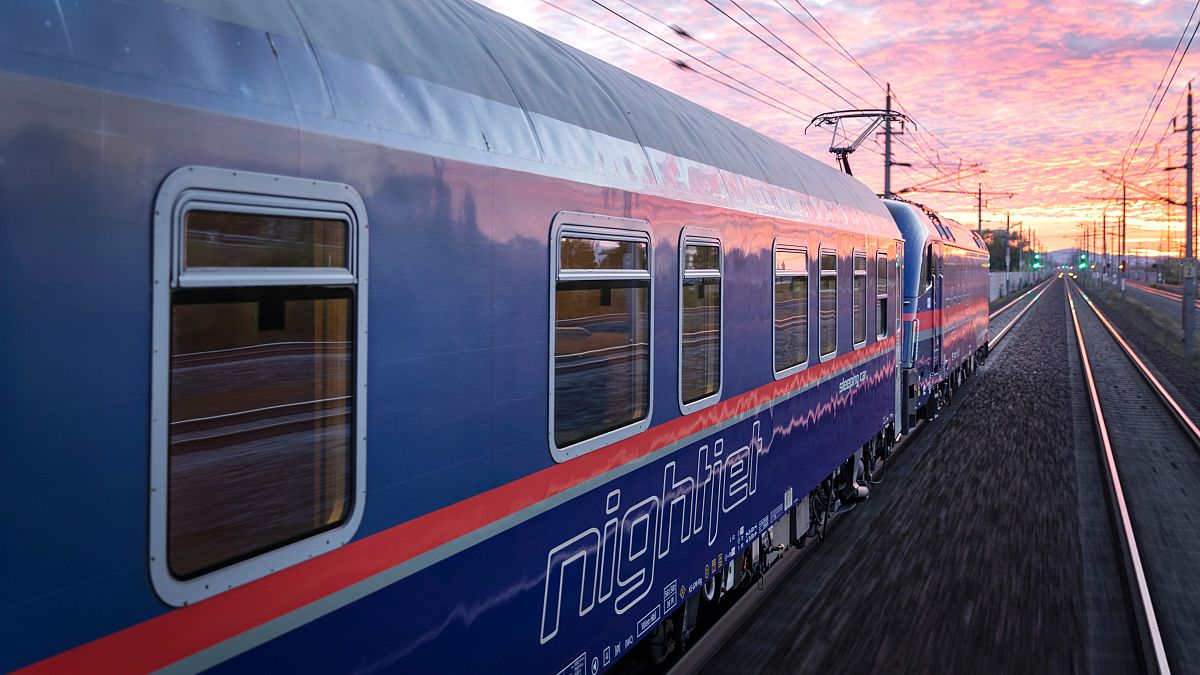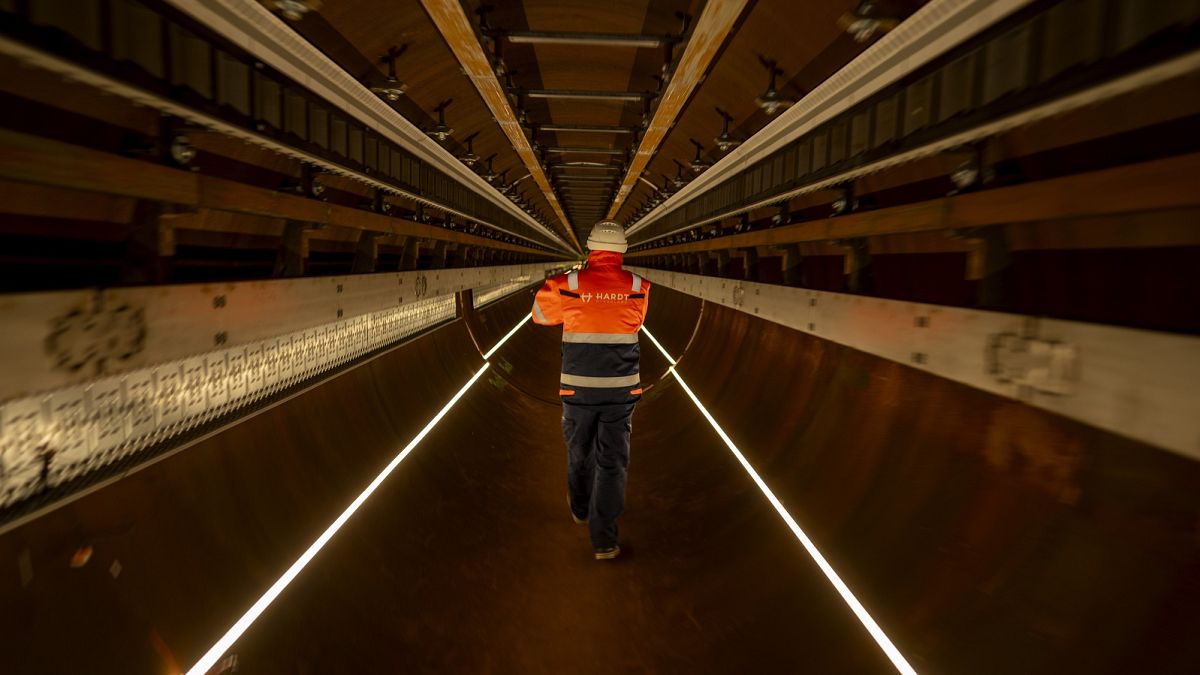Night trains: Inside Europe’s newest sleeper train service

We spoke with European Sleeper co-founder Elmer van Buuren about the challenges and triumphs in setting up his new night train company.
“I’ve been dreaming of having my own train company for over 20 years,” says Elmer van Buuren.
The Dutch entrepreneur’s dream is finally about to come true. Next week, the night train company he co-founded in 2021 – European Sleeper – will hit the tracks.
Capitalising on Europe’s budding train renaissance, Elmer and his business partner Chris Engelsman saw an opportunity and grasped it: “I decided if I want to make it happen, it should be now because night trains are in everyone’s focus.”
Euronews Travel caught up with Elmer ahead of the sleeper train company’s Berlin-Amsterdam-Brussels launch on 25 May.
What challenges has European Sleeper had to overcome?
Even with 16 years’ experience working in the rail industry, setting up a night train company from scratch has been no easy feat.
“It is very difficult and challenging to set up an international train service,” says Elmer, who once worked as a train guard on the Dutch railways. He has since held roles in railway project management, traffic control and consulting.
Cross border timetables
In particular, “coordination between the countries is really, really challenging.” In every country, there are different organisations responsible for the timetable, he explains.
Track works aren’t coordinated either – and since they are typically scheduled at night they often throw schedules into disarray.
“We try to be really transparent and keep everyone updated [when there are changes],” says Elmer.
Trains take up a lot of space in a parking lot
Alongside scheduling issues, operators must grapple with where to park, service and clean the trains when they are not in use during the day.
“There needs to be a clear strategy if we want to attract more people to take the train instead of a plane or car,” says Elmer. “It means that we need to put significantly more trains on the tracks, but it also means that we need significantly more space to service them.”
He says more investment is needed in servicing infrastructure. “And it is a responsibility of the member states in Europe to make that happen.”
Carriages are at a premium
Another issue has been obtaining enough carriages to launch new services. The company is currently refurbishing rolling stock to ensure it maintains its momentum.
Where does the money come from?
Financing this has not always been easy.
“We are a startup… so don’t have a big track record of operating trains for many years,” says Elmer. “So it is very risky from the perspective of financiers.”
Gaining long-term investment is even harder. Train operators need to apply annually for track capacity. “And that means that you cannot really prove that you can produce your product for the next 10 years,” explains Elmer, who turned to crowdfunding to finance his venture.
In May 2021, European Sleeper raised €500,000 in seed capital by selling shares to more than 350 small investors. In a new round just before summer 2022, it sold shares worth €2,000,000 to 1,400 new investors.
Now, Elmer is banking on help from the EU to address roadblocks between member states.
“If we had a framework agreement across the borders that would guarantee… we will get the capacity for the next 10 years, that would highly de-risk the investment and get financiers on board.”
An EU regulatory framework is already in place to support this, Elmer adds, “but we need the member states and infrastructure managers… to make it happen.”
How is European Sleeper doing things differently?
European Sleeper joins just a handful of other operators providing night trains across Europe.
Leading the pack is Austria’s Nightjet, followed by Sweden’s Snälltåget. France’s Midnight Trains is also coming down the line in 2025.
“Of course we are competitors by definition,” says Elmer, “but we are also working together because we’re facing the same challenges.
“We also know that none of us can serve the whole continent by themselves. So basically, I would say we are friendly competitors.”
Where European Sleeper plans to set itself apart is in the customer experience and the booking process.
The company hopes to make ticket sales available through as many sales channels as possible – the difficulty of booking trains compared to flights is one of the biggest barriers for travellers.
“We’re working on Interrail at the moment,” says Elmer. “We think that it will be available very soon.”
They are also working hard on making their own booking platform intuitive and customer focused.
“I think that we have a bit of an advantage of setting up everything from scratch, meaning that we can have a bit more chance of doing it right from the beginning,” says Elmer.
What can you expect when travelling on European Sleeper?
European Sleeper offers three classes. The sleeping cars are the most comfortable and cost from €129 per person for a return from Berlin to Brussels. This includes breakfast just before you reach your destination. They feature compartment beds for a maximum of three people, plus a washbasin and seating area.
Small groups and families can book couchettes (from €89 per person, including breakfast), with compartments for four or six people. Budget travellers can opt for a seat (from €59), with six per compartment.
Although catering will initially be limited, breakfast will be provided for couchette and sleeper passengers. Some drinks and snacks will also be available on board.
“We’re thinking of implementing a dining car also in the relatively short term but it will not be there right from the start,” says Elmer.
Trains will initially run from Brussels to Berlin three times a week on Monday, Wednesday and Friday evenings, with the return journey on Tuesday, Thursday and Sunday.
Who should travel on European Sleeper?
Although night trains tend to be more expensive than budget flights, they are slowly but surely becoming more affordable.
Combining your travel with an overnight stay is not only a savvy way to save time, it also saves on accommodation costs.
“I think that people who take the night train are smart travellers who understand that you can use the night to travel,” says Elmer. “Because you’re sleeping you don’t really notice the distance that you’re covering at the same time.”
For this reason, he sees its potential for both business and leisure travellers of all ages.
“Obviously the more privacy and the more comfort you want, the higher the ticket price will be.”
Budget travellers can opt for the seated class to save money.
“If you compare it to a hotel plus a train ticket, I think the night train has a very competitive price,” says Elmer. “If you’re sitting on a bus of course it’s cheaper, but you don’t get quite the same experience.”
What’s next for European Sleeper?
European Sleeper plans to extend its Brussels-Berlin route to Prague in spring 2024.
The company is already working on another project linking Amsterdam, Brussels and Barcelona. It is slated to launch in spring 2025 and will also serve the north and south of France, including Lille.
“So it will be a connection that can be used from the Netherlands and from Belgium and from the United Kingdom to travel to Provence, to Côte d’Azur and to Barcelona,” says Elmer.
This service has been selected by the European Commission as one of 10 pilot projects that aim to improve train travel and slash emissions across Europe – something that has been helpful in giving the company “a sort of official stamp,” says Elmer.
European Sleeper launches its first ever service, from Berlin to Brussels via Amsterdam, on Thursday 25 May 2023. The company’s ambition is to introduce a new train connection every year.
Source: Euro News














